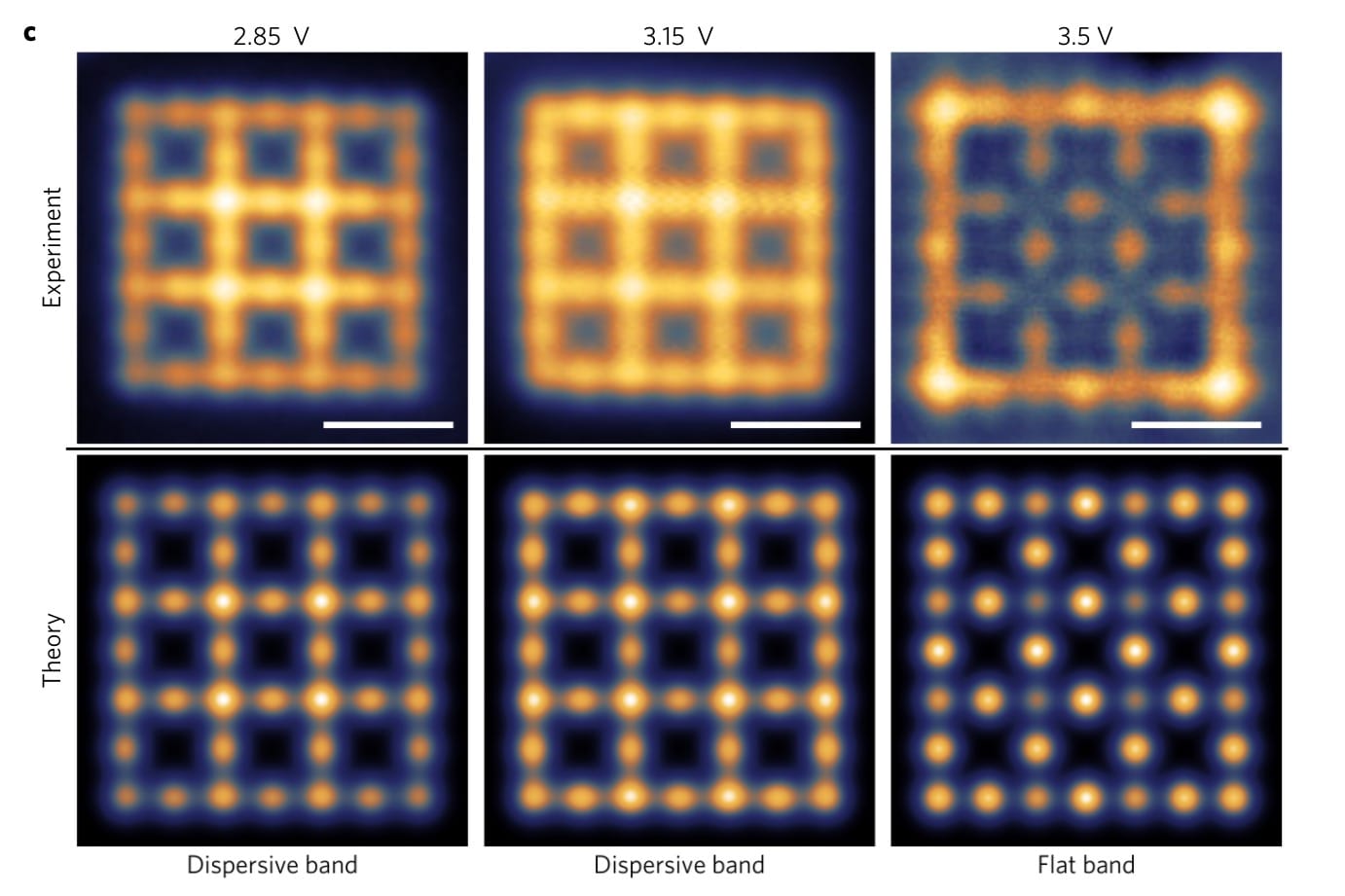
Researchers at the Department of Applied Physics, Aalto University School of Science have devised a system that can apparently position individual atoms.
They explain how it works as follows:
Topological materials exhibit protected edge modes that have been proposed for applications in, for example, spintronics and quantum computation. Although a number of such systems exist1–6, it would be desirable to be able to test theoretical proposals in an artificial system that allows precise control over the key parameters of the model7. The essential physics of several topological systems can be captured by tight-binding models, which can also be implemented in artificial lattices.
Ok, I didn’t understand that either. However, what they seem to have done is used a scanning-tunneling electron microscope to arrange chlorine atoms into various lattice shapes.
At top is an image of their results, with the theoretical lattice on the bottom and the actual experimental results on the top.
They explain further:
In summary, we have presented a general approach for producing tailor-made band structures through atom manipulation using STM. We implemented two model systems with topological states and nearly flat electron bands in a precisely controlled environment. Our approach, combined with the possibilities of automating structure building at the atomic level, places a vast amount of relevant model systems within experimental reach.
However, they chose chlorine atoms as they best exhibited the electrical properties required to implement their theory. And it seems to have worked.
I am not suggesting this is anywhere near being implemented in a 3D printer. It’s just that this is one of the first steps toward what might be called the ultimate 3D printer: one that could assemble objects atom by atom.
Hopefully such a machine operates at a decent speed.
Via Nature

